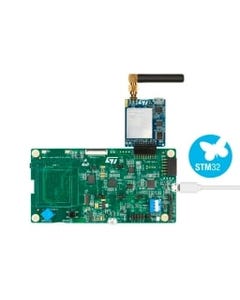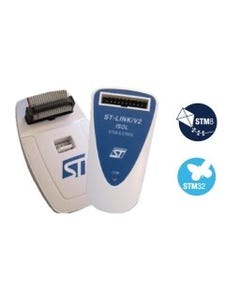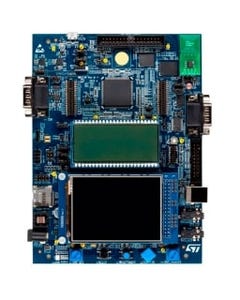📢 $9.99 flat rate shipping in EMEA countries! Ends May 15th - Don't Miss Out!. 🛒 Shop now
Active
STM32L4A6RGT7TR
Ultra-low-power with FPU Arm Cortex-M4 MCU 80 MHz with 1 Mbyte of Flash memory, USB OTG, LCD, AES-256, DFSDM
| Supply Voltage Min Volt | 1.71 |
| Supply Voltage Max Volt | 3.6 |
| Operating Temp Min Celsius | -40.0 |
| Operating Temp Max Celsius | 105.0 |
| Core | Arm Cortex-M4 |
| ECCN US | 5A992.c |
| ECCN EU | NEC |
| Packing Type | Tape And Reel |
| RoHs compliant | Ecopack2 |
| Grade | Industrial |
| Package Name | LQFP 64 10x10x1.4 mm |
The STM32L4A6xG devices are ultra-low-power microcontrollers based on the high-performance Arm® Cortex®-M4 32-bit RISC core operating at a frequency of up to 80 MHz. The Cortex-M4 core features a Floating point unit (FPU) single precision that supports all Arm® single-precision data-processing...
Read More
|
| Quantity | $ per unit | Savings |
|---|---|---|
| 1-9 | $11.76 | 0% |
| 10-24 | $10.81 | 8% |
| 25-99 | $10.37 | 12% |
| 100-249 | $9.13 | 22% |
| 250-499 | $8.68 | 26% |
| 500-999 | $8.12 | 31% |
| 1000-10000 | $7.45 | 37% |
| 10000 + |
Contact sales |
|
| Supply Voltage Min Volt | 1.71 |
| Supply Voltage Max Volt | 3.6 |
| Operating Temp Min Celsius | -40.0 |
| Operating Temp Max Celsius | 105.0 |
| Core | Arm Cortex-M4 |
| ECCN US | 5A992.c |
| ECCN EU | NEC |
| Packing Type | Tape And Reel |
| RoHs compliant | Ecopack2 |
| Grade | Industrial |
| Package Name | LQFP 64 10x10x1.4 mm |
The STM32L4A6xG devices are ultra-low-power microcontrollers based on the high-performance Arm® Cortex®-M4 32-bit RISC core operating at a frequency of up to 80 MHz. The Cortex-M4 core features a Floating point unit (FPU) single precision that supports all Arm® single-precision data-processing...
Read More
|






